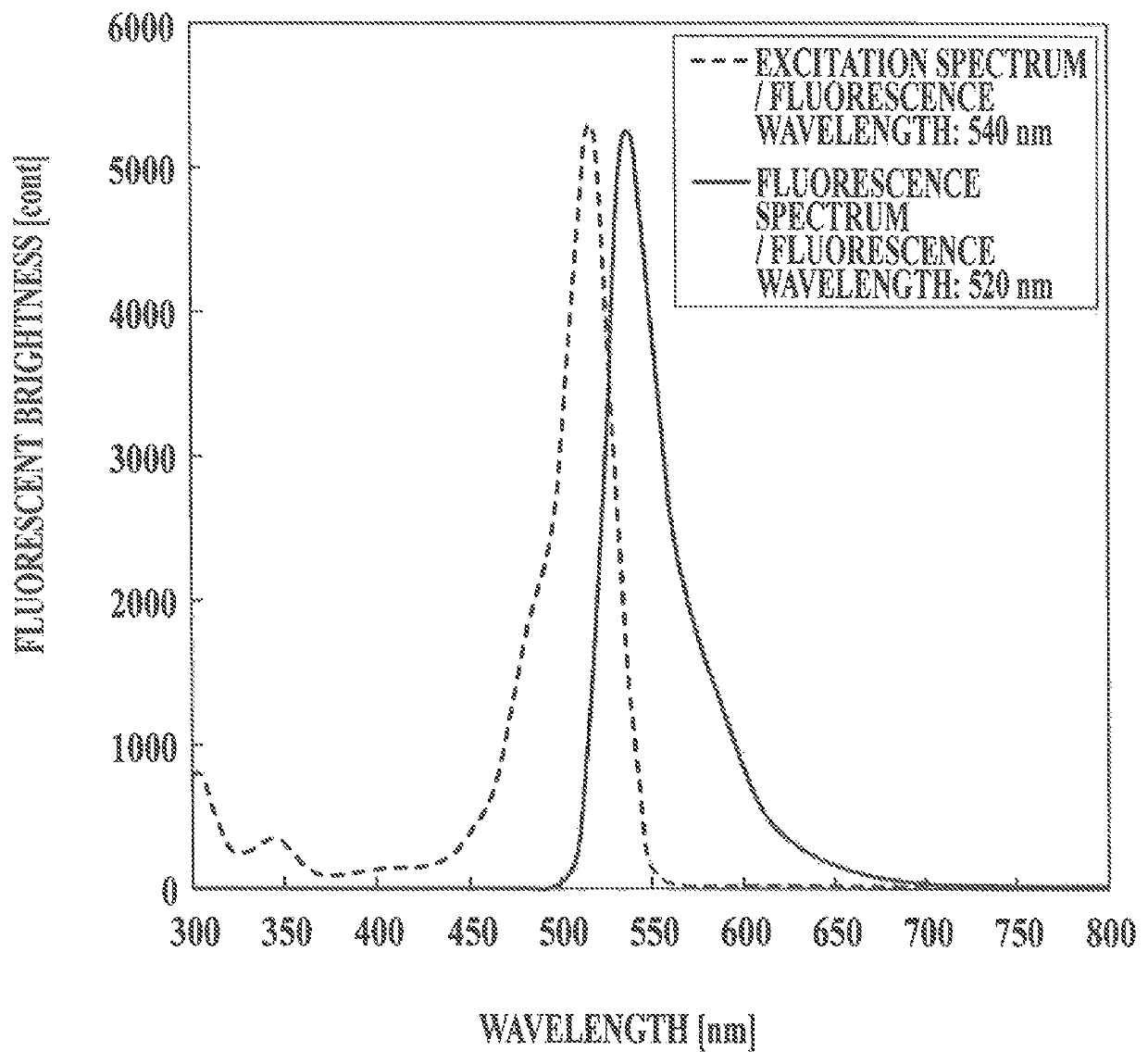Biological substance detection method
a biological substance and detection method technology, applied in the direction of fluorescence/phosphorescence, material analysis, instruments, etc., can solve the problems of easy affecting staining and difficult simultaneous observation
- Summary
- Abstract
- Description
- Claims
- Application Information
AI Technical Summary
Benefits of technology
Problems solved by technology
Method used
Image
Examples
examples
[0076]Hereinafter, the present invention will be described in detail by Examples, but is not limited thereto.
[0077][Preparation of Samples]
[0078](Sample 1: Fluorescent Nanoparticles)
[0079]CdSe / ZnS fluorescent nanoparticles (Qdot655, Invitrogen Corporation) modified with PEG having amino groups at the ends were prepared as fluorescent nanoparticles for antibody binding.
[0080]Meanwhile, anti-human ER antibodies were subjected to reduction treatment with 1M dithiothreitol (DTT), and excess DTT was removed by a gel filtration column to obtain a solution of the reduced antibodies capable of bonding to silica particles.
[0081]The fluorescent nanoparticles for antibody binding and the reduced antibodies were mixed in PBS containing 2 mM EDTA, followed by reaction for 1 hour. The reaction was stopped by adding 10 mM mercaptoethanol. The obtained solution was concentrated with a centrifugal filter, and subsequently, the unreacted antibodies and the like were removed by a gel filtration column...
PUM
| Property | Measurement | Unit |
|---|---|---|
| wavelength region | aaaaa | aaaaa |
| wavelength region | aaaaa | aaaaa |
| wavelength region | aaaaa | aaaaa |
Abstract
Description
Claims
Application Information
 Login to View More
Login to View More - R&D
- Intellectual Property
- Life Sciences
- Materials
- Tech Scout
- Unparalleled Data Quality
- Higher Quality Content
- 60% Fewer Hallucinations
Browse by: Latest US Patents, China's latest patents, Technical Efficacy Thesaurus, Application Domain, Technology Topic, Popular Technical Reports.
© 2025 PatSnap. All rights reserved.Legal|Privacy policy|Modern Slavery Act Transparency Statement|Sitemap|About US| Contact US: help@patsnap.com

